30 Best Jazz Illustration Ideas You Should Check

Source: Agata Piwińska (Zarzycka), Jazz Music, Behance, https://www.behance.net/gallery/156551365/Jazz-music
Dive into the vibrant world of jazz illustration, where every stroke and splash of color sings the tunes of creativity and rhythm. Jazz, with its rich history and dynamic energy, provides a lush playground for artists to explore and express musical narratives visually. Whether you’re a seasoned illustrator or a music enthusiast looking to jazz up your space, discovering the best jazz illustration ideas is like finding a new favorite album—each piece resonates with its own unique vibe and story.
This article will spotlight some of the most captivating and innovative jazz illustration ideas that not only capture the essence of jazz but also push artistic boundaries. From minimalist line art that dances around the simplicity of a saxophone's curve to vibrant, abstract compositions that explode with the energy of a live jazz session, get ready to be inspired. These illustrations promise to infuse your projects or collections with a touch of sophistication and a blast of originality. So, let the good times roll, and let's swing into the visual celebration of jazz!
Jazz Illustration Ideas
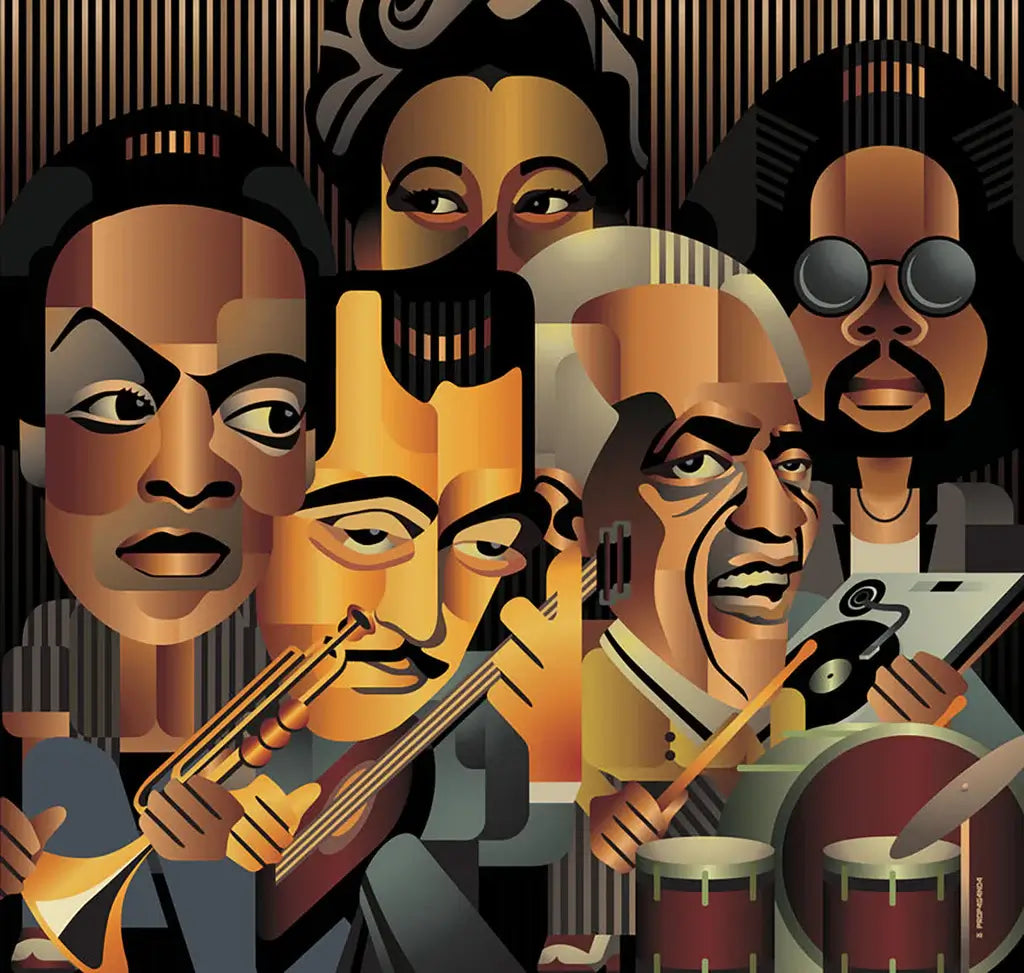
Source: Prop4g4nd4, Inteal Wine Jazz Bistrot, DeviantArt, https://www.deviantart.com/prop4g4nd4/art/INTEAL-Wine-Jazz-Bistrot-108693014

Source: Borda, Learning To Dance In The Rain, DeviantArt, https://www.deviantart.com/borda/art/Learning-to-Dance-in-The-Rain-oil-painting-673083655

Source: Alsature, Bar Fly, DeviantArt, https://www.deviantart.com/alsature/art/Bar-Fly-84703682
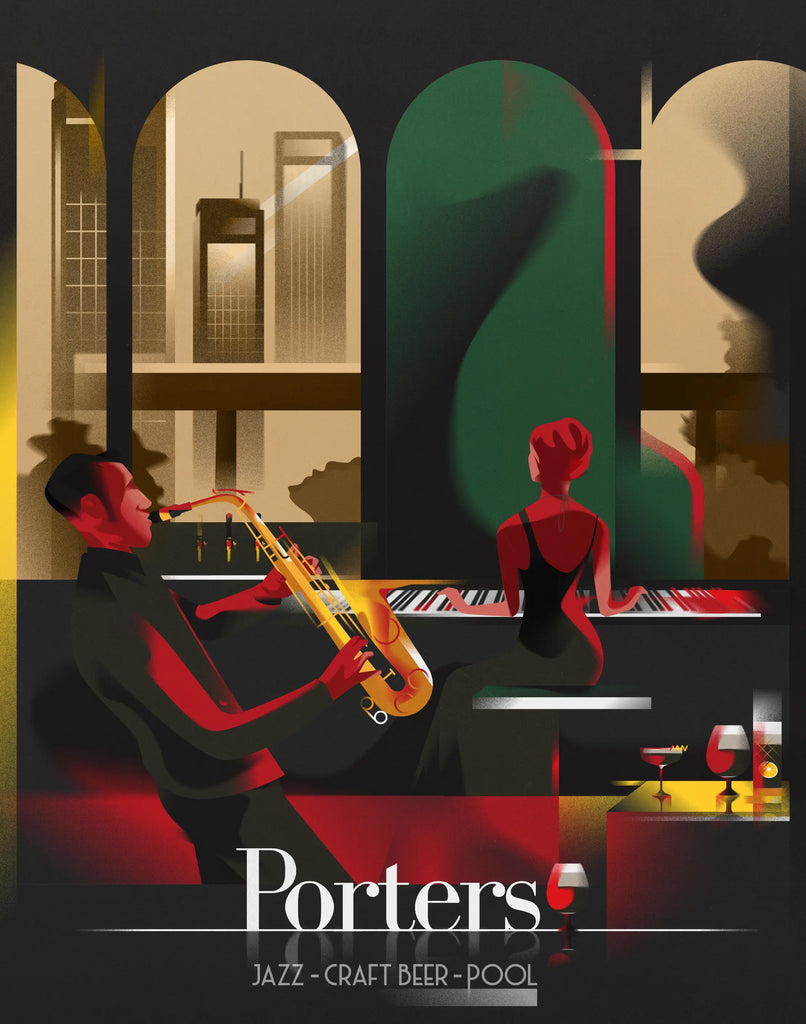
Source: Amit Kumar Verma, Porters Jazz Bar, Behance, https://www.behance.net/gallery/195054983/Porters-Jazz-Bar

Source: Samkaat, DeviantArt, https://www.deviantart.com/samkaat/art/jazz-93028189
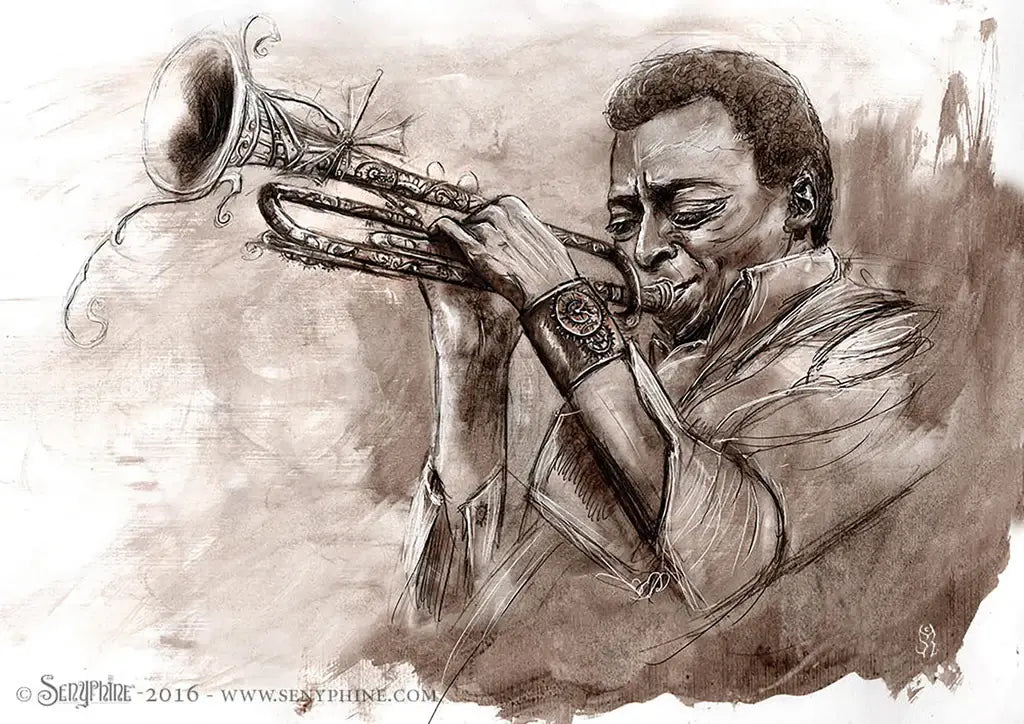
Source: Senyphine, Miles Davis, DeviantArt, https://www.deviantart.com/senyphine/art/Miles-Davis-592819461

Source: Micko-Vic, DeviantArt, https://www.deviantart.com/micko-vic/art/Art-Composer-9-203278997
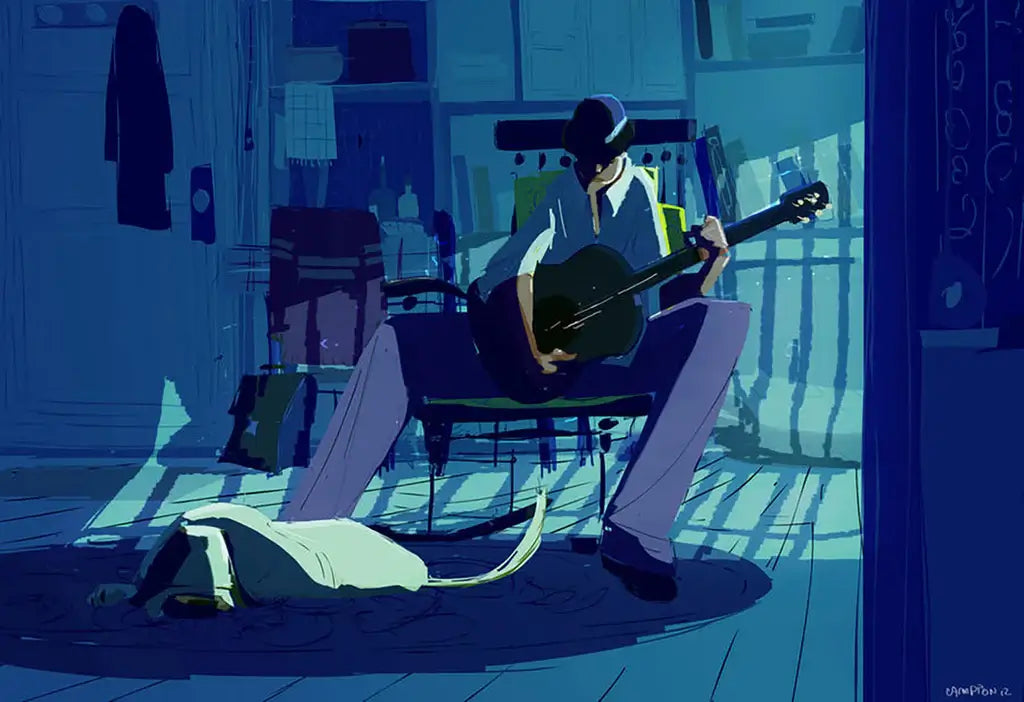
Source: Pascal Campion, Past Two, DeviantArt, https://www.deviantart.com/pascalcampion/art/Past-Two-327139455
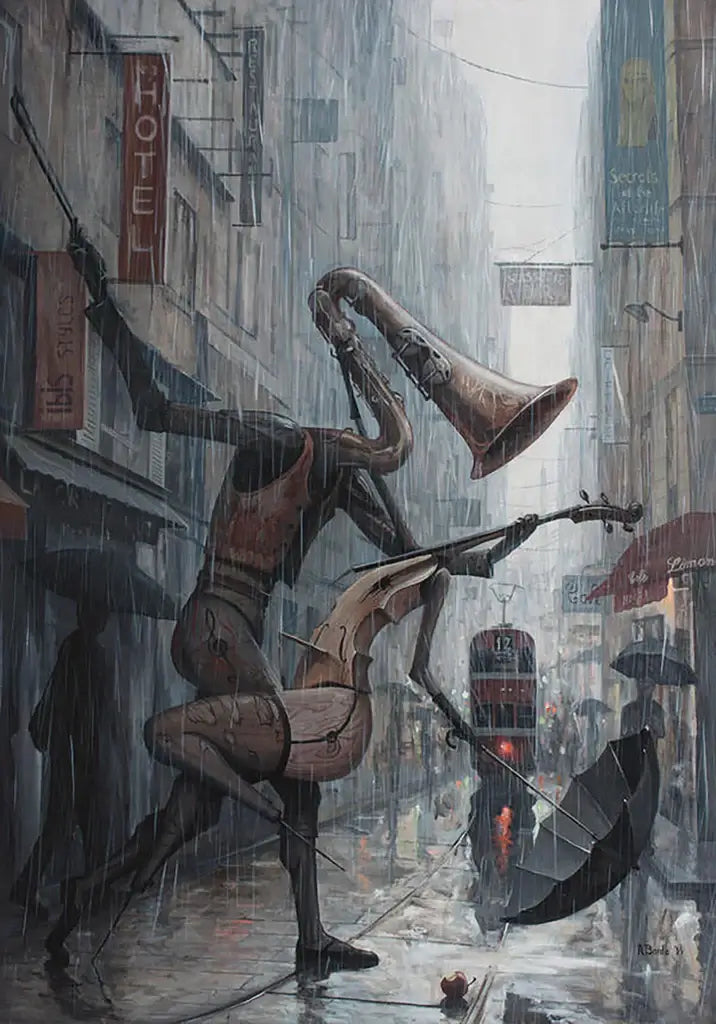
Source: Borda, Life Is A Dance In The Rain, DeviantArt, https://www.deviantart.com/borda/art/Life-is-a-Dance-in-The-Rain-III-485521894
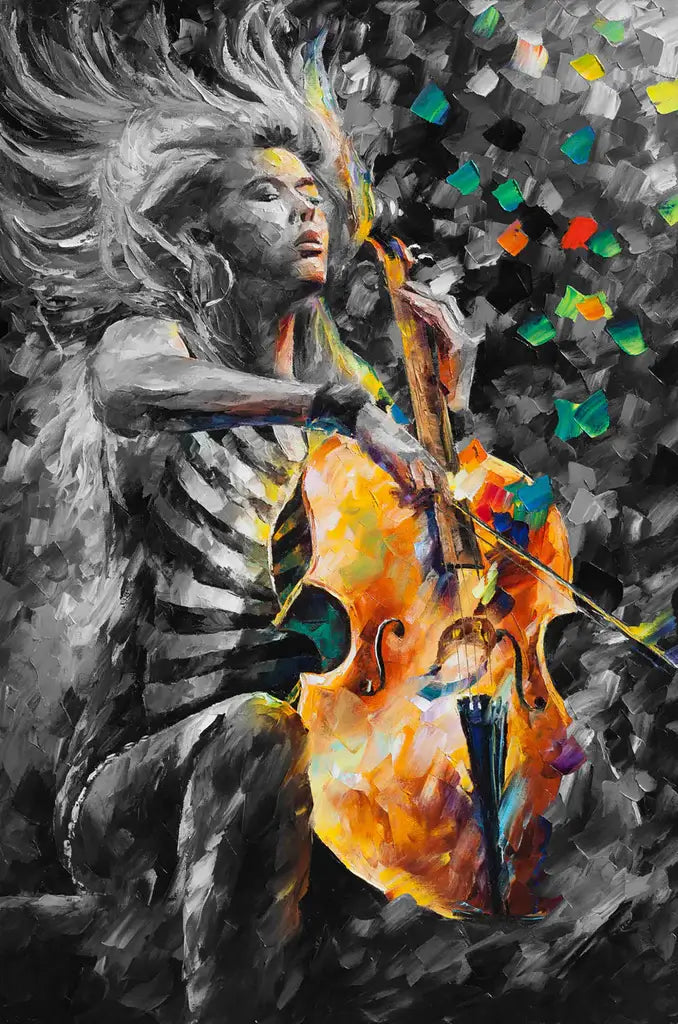
Source: Leonid Afremov, Rhapsody, DeviantArt, https://www.deviantart.com/leonidafremov/art/RHAPSODY-Limited-edition-giclee-661750461

Source: Cesarvs, Menilmontant, DeviantArt, https://www.deviantart.com/cesarvs/art/Menilmontant-735517433
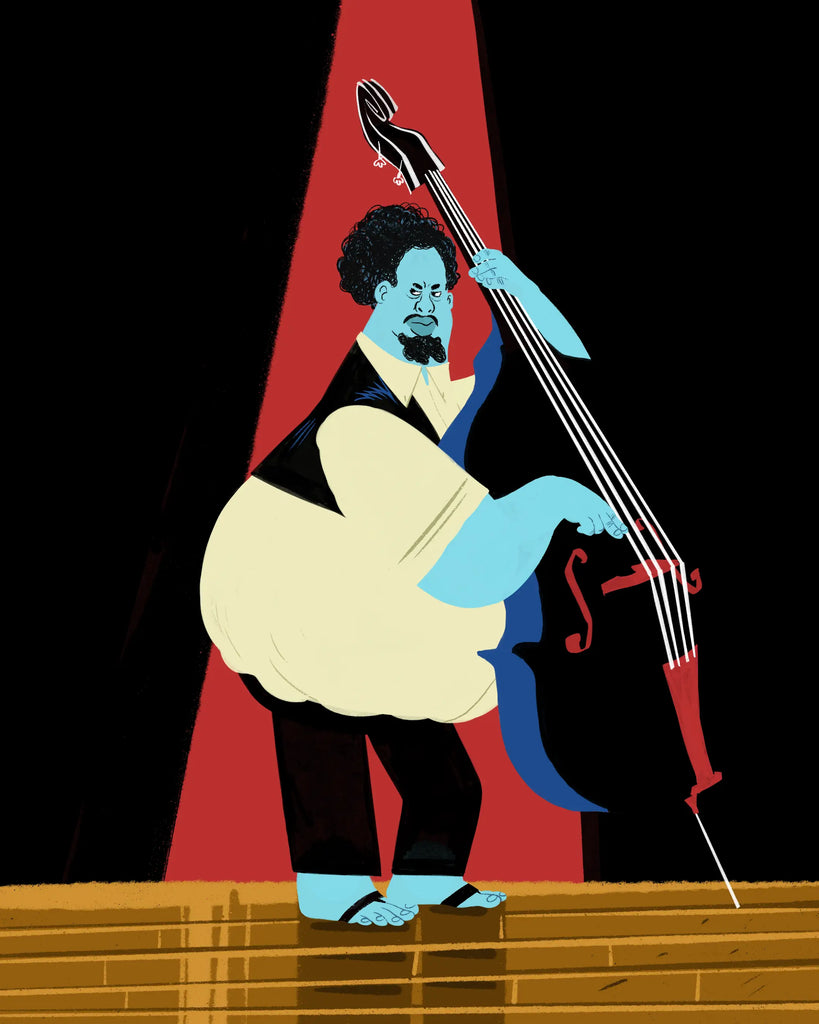
Source: Kanjano, Charles Mingus, Behance, https://www.behance.net/gallery/80844565/Charles-Mingus-Really-playin-his-doublebass
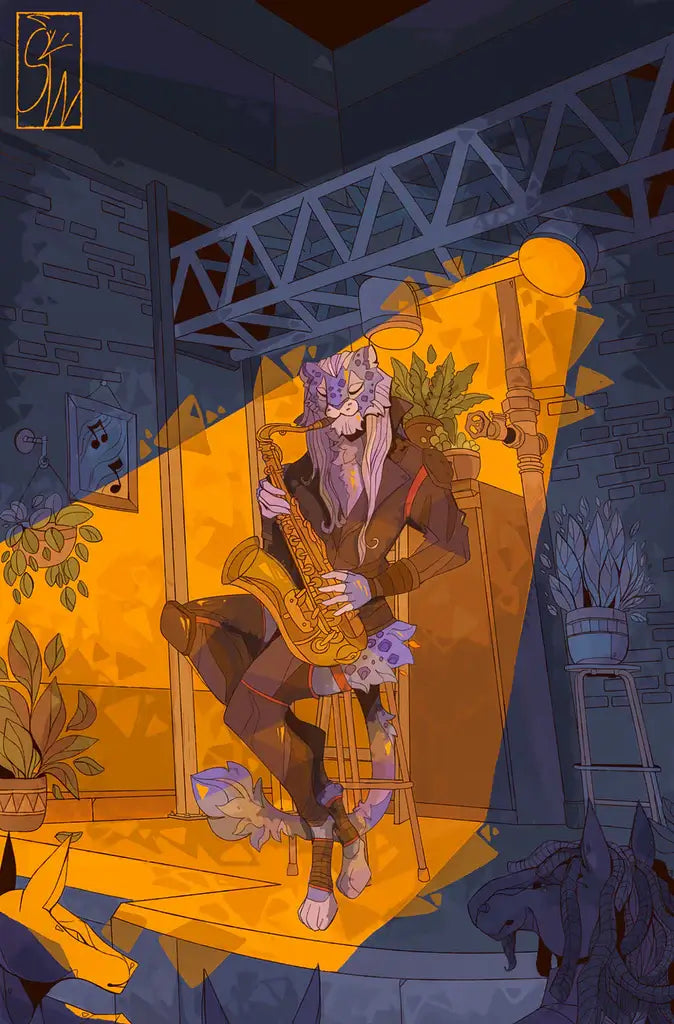
Source: Sleepingwoolf, CM Jazz Club, DeviantArt, https://www.deviantart.com/sleepingwoolf/art/CM-Jazz-Club-892074195
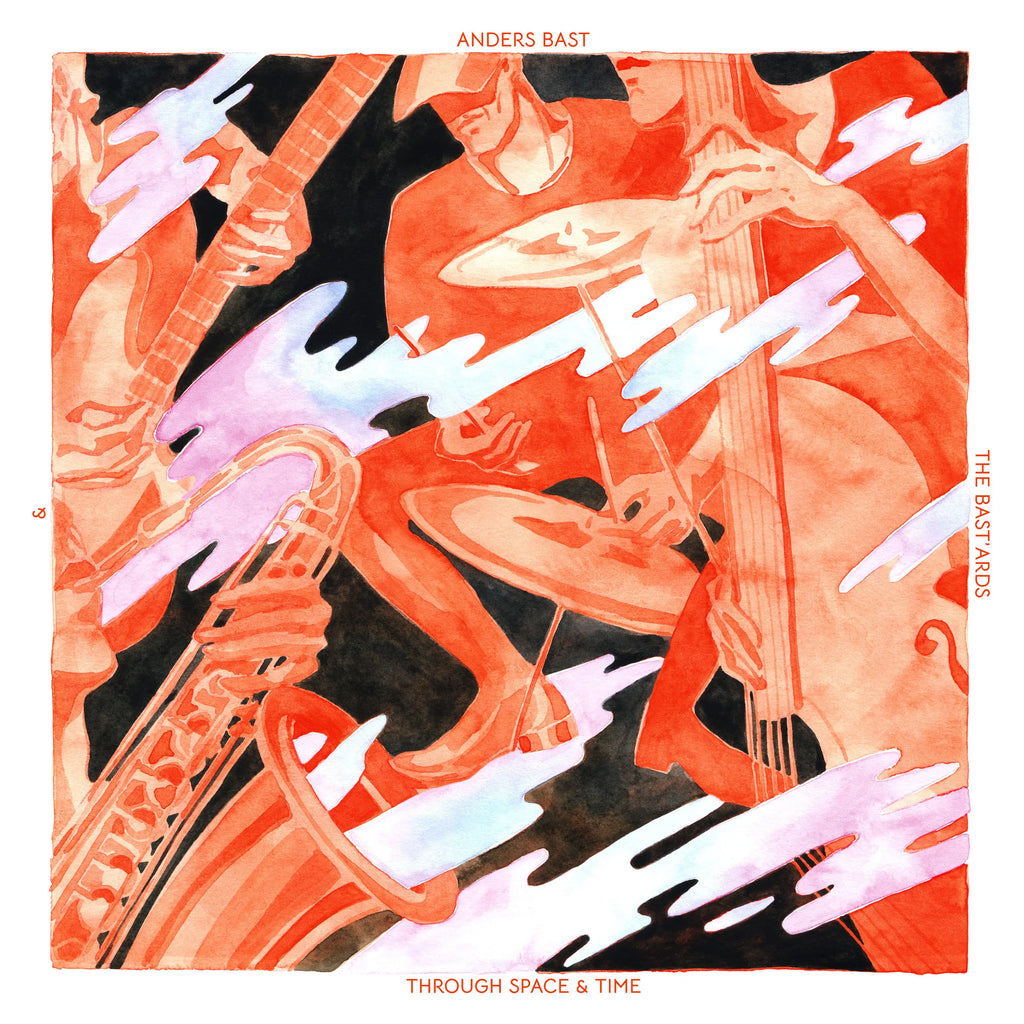
Source: Ella Mezule, Jazz Album, Behance, https://www.behance.net/gallery/123245375/Jazz-Album-illustration-and-design
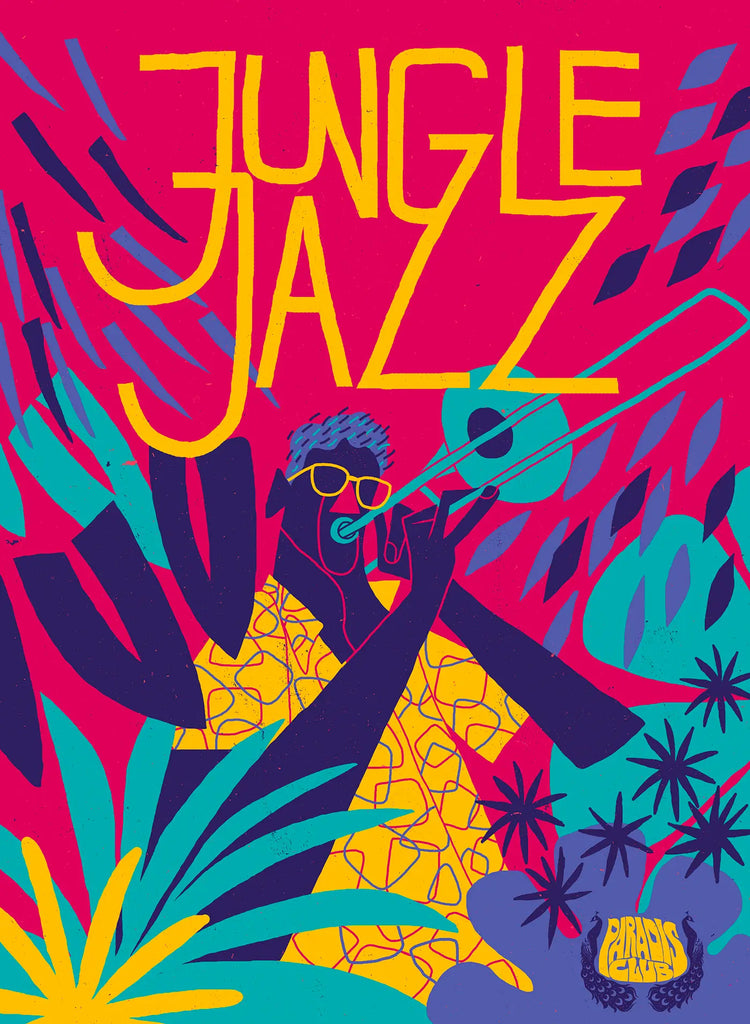
Source: André Ducci, Jungle Jazz, Behance, https://www.behance.net/gallery/79641361/Jungle-Jazz

Source: Ana Varela, All that Jazz, Behance, https://www.behance.net/gallery/181871039/All-that-Jazz-Poster
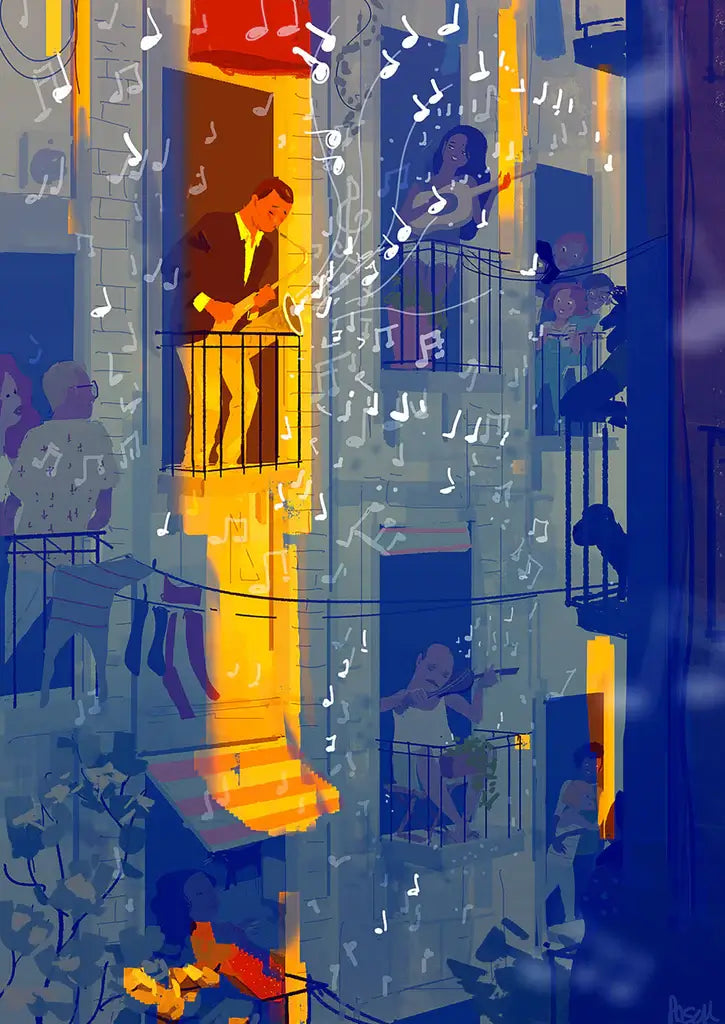
Source: Pascal Campion, Quarantined, DeviantArt, https://www.deviantart.com/pascalcampion/art/Quarantined-833862986
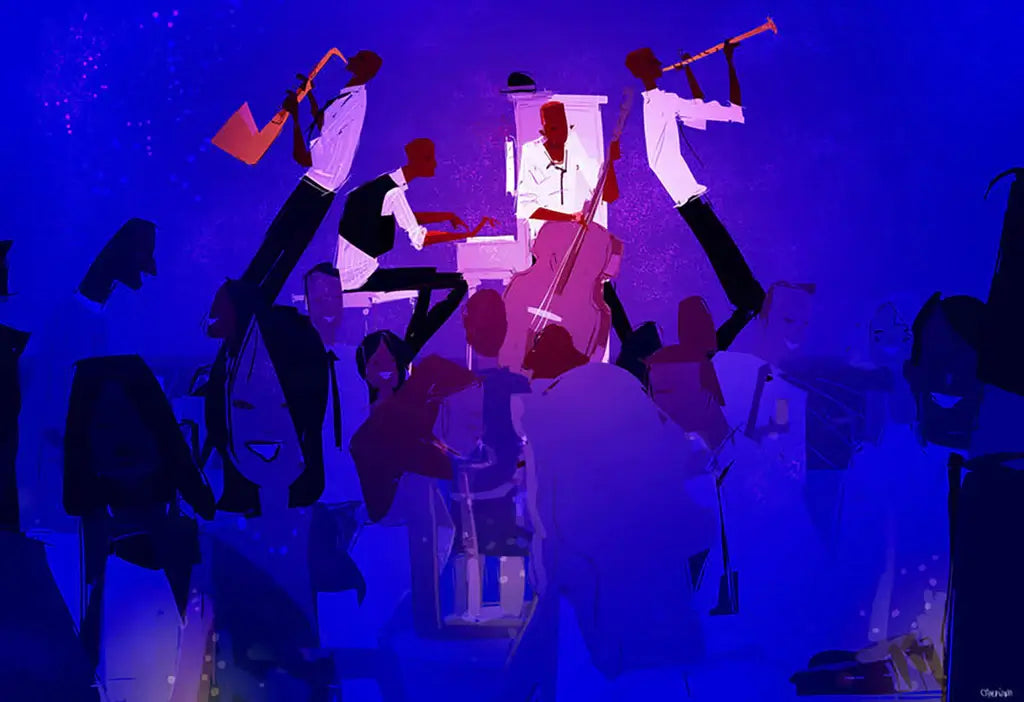
Source: Pascal Campion, Pascal Campion, DeviantArt, https://www.deviantart.com/pascalcampion/art/Warm-smooth-and-smoky-342812143

Source: Pascal Campion, Music Man, DeviantArt, https://www.deviantart.com/pascalcampion/art/Music-man-725864484
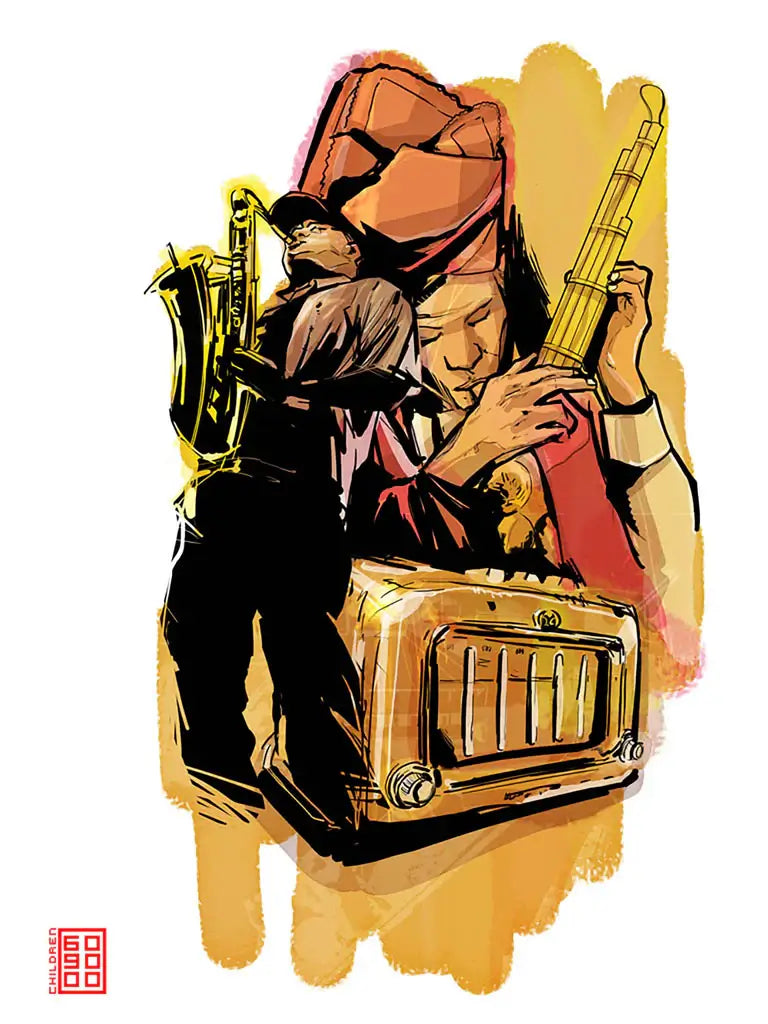
Source: Popia, Tone, DeviantArt, https://www.deviantart.com/popia/art/tone-31142935
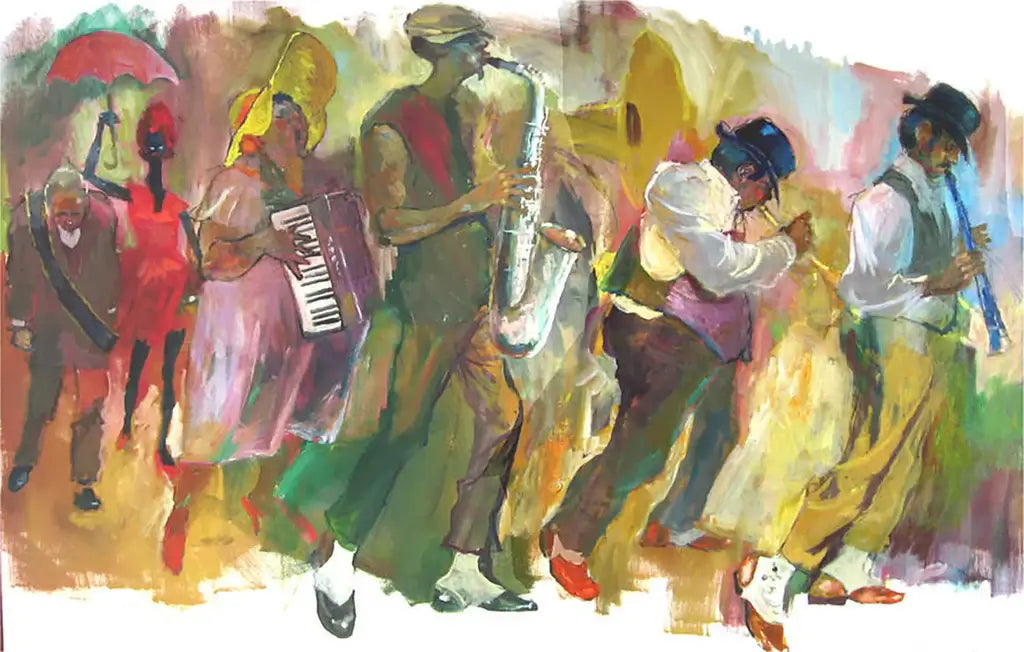
Source: Redelephant, A Funeral, DeviantArt, https://www.deviantart.com/redelephant/art/a-funeral-125692583
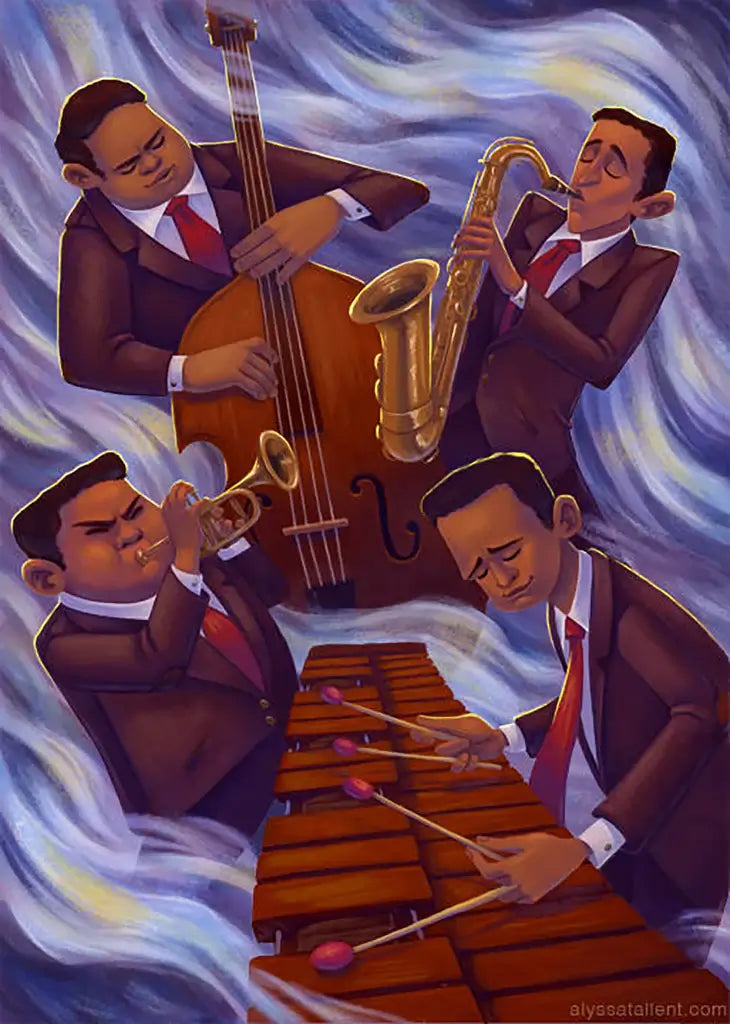
Source: Alyssatallent, All That Jazz, DeviantArt, https://www.deviantart.com/alyssatallent/art/All-That-Jazz-586012264
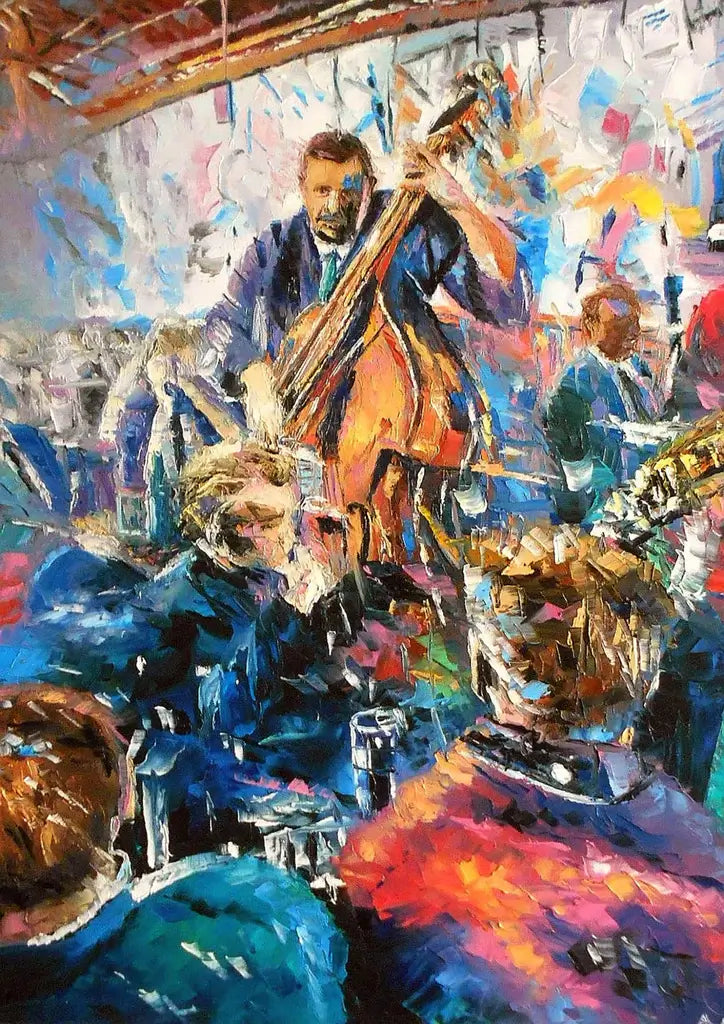
Source: Alistark91, Jazz Club, DeviantArt, https://www.deviantart.com/alistark91/art/Jazz-Club-896339713

Source: Pascal Campion, The Broken Heart Club, DeviantArt, https://www.deviantart.com/pascalcampion/art/The-broken-heart-club-514989407

Source: Micko-Vic, Music For Life, DeviantArt, https://www.deviantart.com/micko-vic/art/MUSIC-FOR-LIFE-No-2-664927470
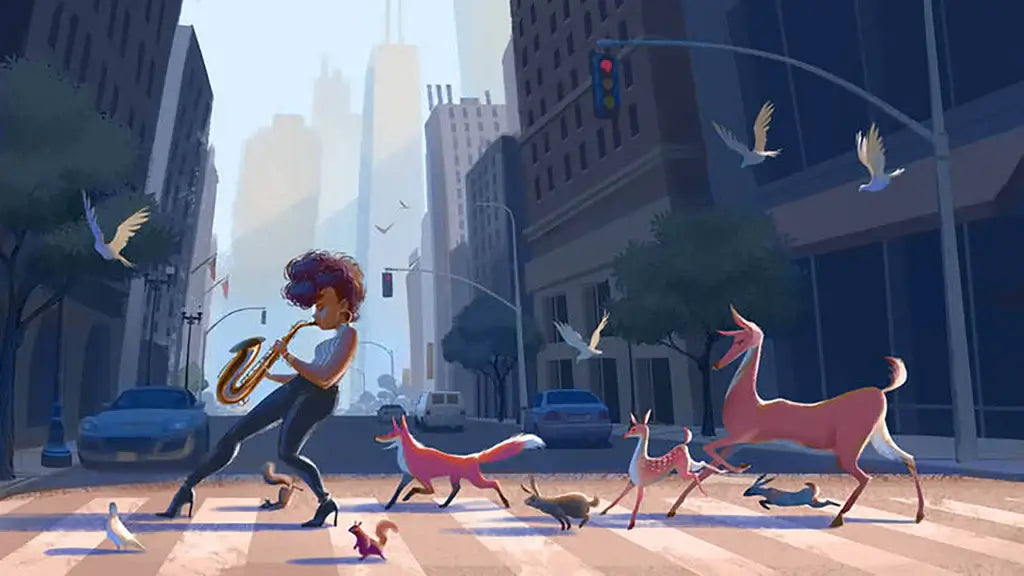
Source: Lashialee, Jazz Musician, DeviantArt, https://www.deviantart.com/lashialee/art/Jazz-Musician-909133492

Source: Camillenat, Camillenat, DeviantArt, https://www.deviantart.com/camillenat/art/Jazz-club-643729584
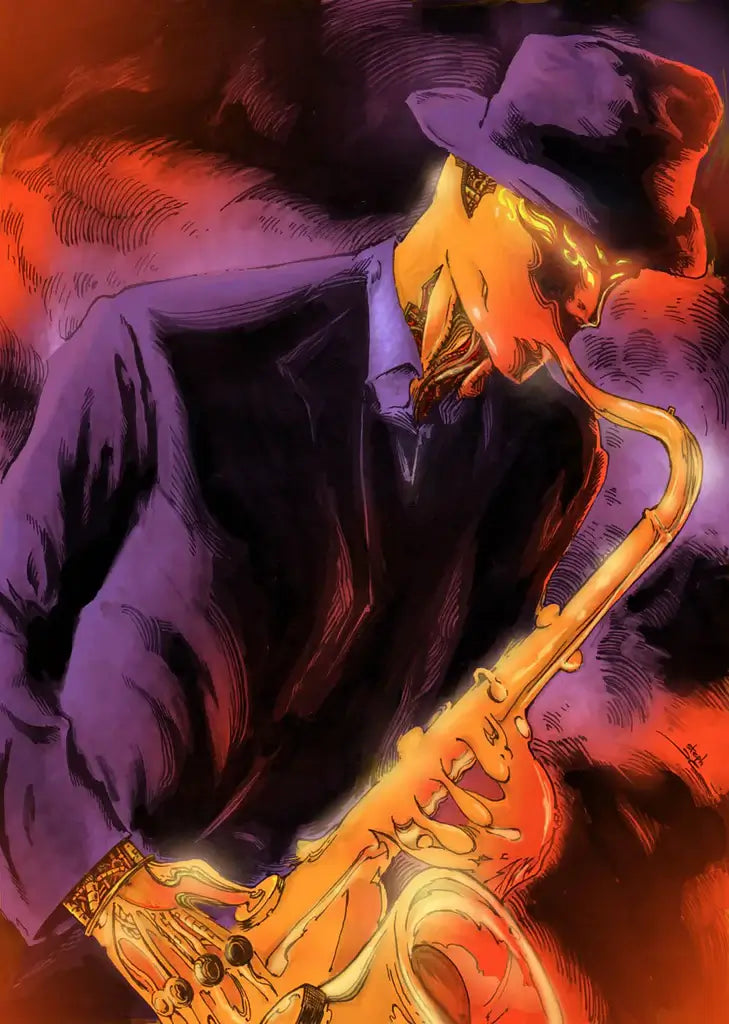
Source: Abc142, Visions From Punktown, DeviantArt, https://www.deviantart.com/abc142/art/Visions-from-punktown-567527057

Source: F3nd1mus, F3nd1mus, DeviantArt, https://www.deviantart.com/f3nd1mus/art/8-12-2022-48-925970947
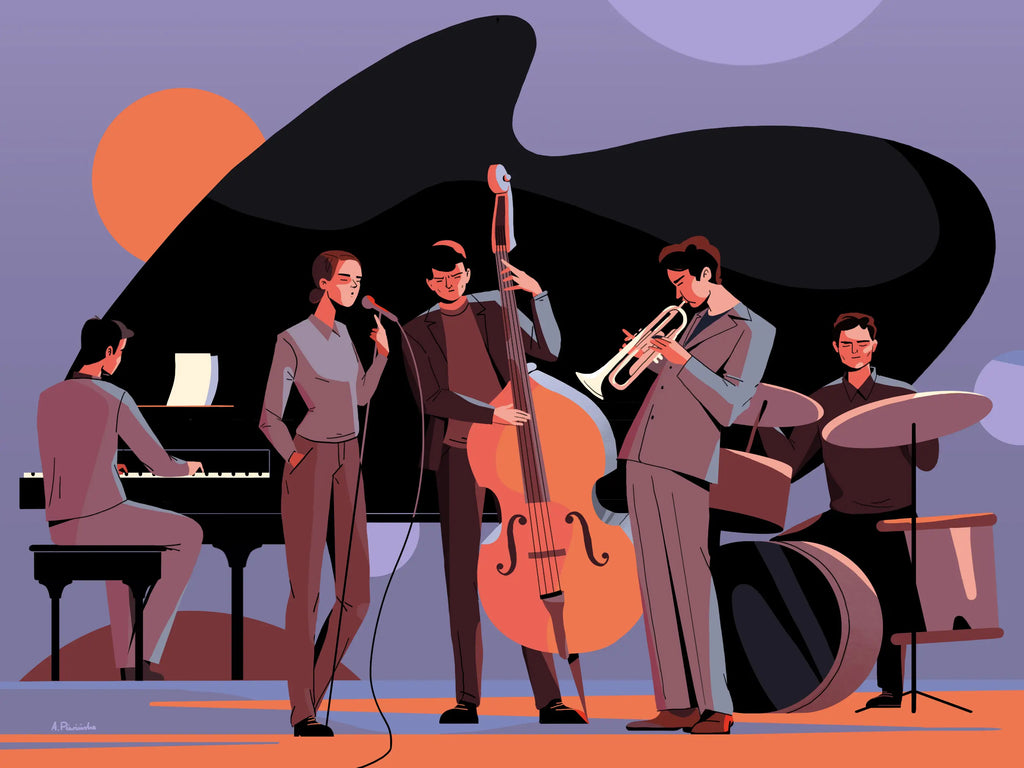
Source: Agata Piwińska (Zarzycka), Jazz Music, Behance, https://www.behance.net/gallery/156551365/Jazz-music
What Are the Key Elements of Jazz Illustration?
Jazz illustration dances to the beat of its own drum, capturing the essence of music with every line and shade. It's not just about drawing; it's about swinging with visuals! Let's groove through the five key elements that make jazz illustration pop, sway, and sing.
Rhythm and Movement
Just like jazz music is known for its rhythmic beats and spontaneity, jazz illustrations echo this sentiment. Artists often use fluid, sweeping lines that mimic the freeform nature of jazz. This dynamic use of lines suggests movement, making the artwork feel as if it is literally moving to the beat. It’s about capturing the motion of the music, where each stroke plays its tune and keeps the viewers' eyes dancing across the page.
Expression and Emotion
Jazz is deeply emotional, often reflecting themes of joy, struggle, and liberation. Jazz illustrations tap into this by deploying expressive features and exaggerated forms. Artists might intensify facial expressions or use vibrant, contrasting colors to evoke specific feelings. This isn’t just art—it’s a mood, a piece that aims to stir something deep within the soul, much like a powerful jazz solo.
Color Palette
The choice of colors in jazz illustrations can vary widely, but they often involve bold, vivid hues that stand out just like the loud, distinct sounds of a jazz band. Deep blues, fiery reds, and moody purples can dominate these visuals, painting not just a scene but also an atmosphere. Sometimes, monochrome with a splash of color highlights the dramatic flair of jazz music, focusing attention and amplifying impact.
Iconography
Elements like musical instruments, smoky bars, fedoras, and double basses are icons commonly associated with jazz and are often depicted in jazz illustrations. Incorporating these symbols helps set the scene and immediately connects the viewer to the jazz culture. It’s about creating a visual lexicon that speaks the language of jazz, where every icon is a note in the illustrative melody.
Improvisation and Abstract Forms
If jazz music is the art of improvisation, jazz illustration is its visual counterpart. Many jazz artworks feature abstract elements that defy strict forms, much like improvised solos that defy predictable patterns. These illustrations may blend surrealistic approaches with realistic depictions, creating a fascinating interplay between the abstract and the concrete. The result? Art that captures the imagination and encourages the viewer to explore the depths of the illustration, finding new details in every glance.
Together, these elements compose the jazz illustration—a genre of art as rich and diverse as the music that inspires it. So, when you look at a jazz illustration, feel the music through its elements and let your eyes follow the rhythm of the artistic expression!
What Styles Are Common in Jazz Illustration?
Jazz illustration, like the music it celebrates, is all about expression, emotion, and the essence of cool. Whether you're channeling the roaring twenties or the experimental seventies, various artistic styles can bring the soulful sounds of jazz to life on paper, canvas, or digital screens. Let’s groove through five popular styles that resonate well within jazz illustrations, each bringing a unique flair and rhythm to the visual representation of this vibrant music genre.
Art Deco
With its origins deeply rooted in the jazz age, Art Deco is a style that naturally harmonizes with jazz illustration. Characterized by rich colors, bold geometric shapes, and lavish ornamentation, Art Deco reflects the glamour and luxury of the early jazz scenes. This style is perfect for evoking the opulent, energetic atmospheres of speakeasies and grand music halls where jazz once thrived and still does.
Abstract Expressionism
Jazz is music that’s all about improvisation and emotional depth—qualities that abstract expressionism captures flawlessly. This style allows for a spontaneous, intuitive expression of emotions. Swirling colors, dynamic brush strokes, and a sense of movement help convey the feel of a jazz piece, translating the improvisational nature of jazz into visual art that’s as impactful as a live performance.
Minimalism
Sometimes, less is more, even in the visually busy world of jazz. Minimalist jazz illustrations focus on clean lines, limited color palettes, and uncluttered compositions, which can powerfully convey the essence of jazz through simplicity. This style can effectively highlight the elegance and refinement of jazz music, making every line and color choice significant—much like each note in a minimalist jazz solo.
Surrealism
To capture the fantastical and often whimsical side of jazz, surrealism offers an intriguing pathway. In surreal jazz illustrations, artists may blend dream-like scenes with realistic depictions of musicians and instruments, creating a fantastical world where anything feels possible—much like the boundless explorations found in jazz music.
Pop Art
Vibrant and bold, pop art can infuse jazz illustrations with a modern twist, using bright colors, bold outlines, and repeated images to create a lively, energetic effect that pops. This style reflects the fun and dynamic nature of jazz and can make illustrations feel current and accessible, appealing to a younger audience or bringing a retro yet contemporary feel to promotional materials for jazz events.
Each of these styles offers a different lens through which to view jazz, allowing illustrators to explore various facets of the music’s culture, history, and emotion. Let your creativity swing to the rhythm of these styles, and watch your jazz illustrations come alive with the soulful sounds of this timeless genre!
Which Colors Work Best for Jazz Illustration?
When it comes to jazz illustration, choosing the right color palette is like selecting the perfect set of tunes for a sizzling jazz session—each color sets a tone and evokes emotion, playing a crucial role in the visual storytelling of the piece. Let's dive into the five vibrant colors that harmonize best with the lively and expressive spirit of jazz illustration.
Midnight Blue
Imagine the deep, resonant tones of a saxophone or the velvety voice of a jazz singer echoing through a late-night club. Midnight blue captures this mood perfectly, offering a rich, profound base that suggests depth and sophistication. This color works wonders in backgrounds, providing a cool, calming canvas that allows brighter colors to pop, much like a soft bass line underpinning a lively jazz melody.
Brassy Gold
Nothing says jazz quite like the shiny, polished surface of brass instruments. Brassy gold brings a touch of luxury and a hint of the old-world charm associated with jazz music. Use it to highlight instruments, accessories, or even text elements in your illustration to add a splash of warmth and a hint of the classic jazz era glamour.
Smoky Gray
Reminiscent of the smoky bars where jazz flourished, gray provides a neutral but atmospheric backdrop that can give your illustration a sense of authenticity and timelessness. It’s the perfect mediator that balances brighter colors and adds a hint of mystery and intrigue, just like a subtle drum solo that keeps you wanting more.
Crimson Red
To convey the passion and soul of jazz, crimson red is your go-to color. It’s bold, vibrant, and full of energy, capable of drawing attention and highlighting key elements of your illustration like no other. Whether it’s a striking tie on a musician’s outfit or the glowing lights of the stage, crimson red injects life into drawings and mirrors the heart’s beat pumping through a powerful jazz performance.
Ivory White
Jazz isn’t all shadows and dim lights; it’s also about the brilliance and lightness that music brings to life. Ivory white can provide contrast, highlight areas of importance, and bring a soft lightness to your jazz illustration. Use it in smoke swirls, spotlight beams, or the gleaming whites of a piano to break through the darker tones and add a lyrical, airy feel to the scene.
These colors, when combined, play a visual symphony that’s as engaging and dynamic as jazz itself. So, let your palette swing and give your jazz illustrations a life of their own with these expressive colors. Get ready to paint the town with the shades of jazz!
What Are Some Creative Background Ideas for Jazz Illustration?
Setting the stage for a jazz illustration is much like preparing for a jazz performance—it’s all about creating the right ambiance and mood. From smoky bars to abstract landscapes, the background of a jazz illustration can enhance the storytelling and emotional impact of the artwork. Let's dive into five creative background ideas that can jazz up any illustration, making each piece swing with the rhythm of this beloved music genre.
Cityscape Silhouettes
Jazz has deep urban roots, often associated with the night life of bustling cities like New Orleans, Chicago, and New York. A silhouette of a city skyline at dusk or nighttime creates a dramatic backdrop that speaks to the soul of jazz. The contrast of dark building outlines against a twilight sky can evoke the mysterious and improvisational nature of jazz, setting a perfect stage for the musicians and their instruments to shine.
Vintage Club Interiors
Imagine the golden age of jazz with plush velvet curtains, art deco wallpapers, and classic mic stands. Illustrating a vintage jazz club interior as a background can transport viewers back in time to the smoke-filled rooms where legends were made. Such a setting not only provides a rich narrative context but also adds a layer of authenticity and nostalgia to the artwork.
Abstract Musical Elements
To capture the essence of jazz’s spontaneity, using abstract elements like musical notes, staff lines, or sound waves can be a dynamic choice. These elements can swirl around the musicians, merge into the surroundings, or form the very structure of the background, creating a visual metaphor for the music’s omnipresence and the enveloping soundscapes it creates.
Collage of Jazz Era Memorabilia
For a more eclectic and textured background, consider a collage composed of period-specific items like vintage record covers, concert posters, and old photographs. This type of background not only adds depth and interest but also tells a richer story by embedding the illustration within the historical and cultural context of jazz.
Explosive Color Gradient
Jazz is all about emotion and expression, which can be visually mirrored through the use of vibrant, explosive color gradients in the background. Think of colors that blend and burst like the sounds of a jazz chord—deep purples, fiery oranges, passionate reds, and deep blues. These gradients can simulate stage lights, evoke feelings of passion and energy, and set a mood that lifts the jazz illustration from the paper or screen right into the viewer’s heart.
Each of these background ideas can add dimension and atmosphere to jazz illustrations, enhancing the visual narrative and deepening the connection between the artwork and its audience. So, let your creativity flow, mix and match these ideas, and watch your jazz illustrations come alive with stories and styles as diverse and rich as jazz music itself!
Where Can I Find Inspiration for Jazz Illustration?
Jazz illustration is an art form that resonates with the spontaneity and rhythm of jazz music itself. If you're looking to capture the essence of jazz in your artwork, the world is full of vibrant sources of inspiration. Here are five fantastic starting points to help spark your creativity and get those artistic juices flowing with the smooth, syncopated rhythms of jazz.
Live Jazz Performances
There’s nothing quite like the energy and atmosphere of a live jazz concert. The musicians, the instruments, the audience’s reactions—it’s all ripe for artistic interpretation. Attend local jazz clubs, outdoor jazz concerts, or music festivals to immerse yourself in the scene. Observe the interactions, the expressions, and the movements of musicians and spectators alike. Feel the music, and let those feelings translate into your illustrations.
Historic Jazz Albums and Posters
Dive into the visual and auditory history of jazz by exploring iconic jazz album covers and vintage posters. These pieces often encapsulate the essence of the jazz age, featuring influential musicians and classic jazz iconography. Study the typography, color palettes, and composition styles used during different jazz eras to understand how visuals have traditionally interacted with jazz music.
Jazz Photography Books and Documentaries
Look for photography books and documentaries focusing on jazz. These resources provide a visual history of the genre, showcasing famous jazz scenes, behind-the-scenes moments, and portraits of legendary artists. Photographs can capture subtle nuances of the jazz culture that might be overlooked in other mediums and can serve as a detailed reference for your illustrations.
Art Movements Influenced by Jazz
Explore art movements that were contemporary with or influenced by jazz music, such as the Harlem Renaissance, Art Deco, and Abstract Expressionism. These styles reflect the cultural and social dynamism of their time, much like jazz. See how artists have historically translated the themes and moods of jazz into visual arts and how you can adopt elements of these styles in your work.
Personal Experiences and Experimentation
Use your own experiences and emotions related to jazz as a source of inspiration. Listen to a wide range of jazz styles, from bebop to swing to modern jazz, and let each piece guide your creative process. Experiment with different mediums and techniques—perhaps charcoal for its smoky texture or digital tools for vibrant color overlays. Let your personal connection to the music influence your artistic decisions.
By tapping into these diverse sources of inspiration, you can develop a rich, multi-dimensional approach to jazz illustration. Each source offers a unique lens through which to view and interpret the soul-stirring world of jazz, providing endless possibilities for creativity. So, let the rhythm of jazz inspire your artistic masterpiece!
Conclusion
Jazz illustration is a vibrant art form that requires a deep understanding of both visual and musical elements. By exploring various sources of inspiration—from live music performances and historic jazz artifacts to influential art movements—you can infuse your artwork with the rhythm and soul of jazz. Embrace the spontaneity and expressive qualities of jazz illustration to create pieces that resonate with viewers and celebrate this rich musical tradition. Whether you're a seasoned artist or a newcomer to the scene, the world of jazz illustration offers endless opportunities for creativity and expression.
Let Us Know What You Think!
Every information you read here are written and curated by Kreafolk's team, carefully pieced together with our creative community in mind. Did you enjoy our contents? Leave a comment below and share your thoughts. Cheers to more creative articles and inspirations!















Leave a Comment